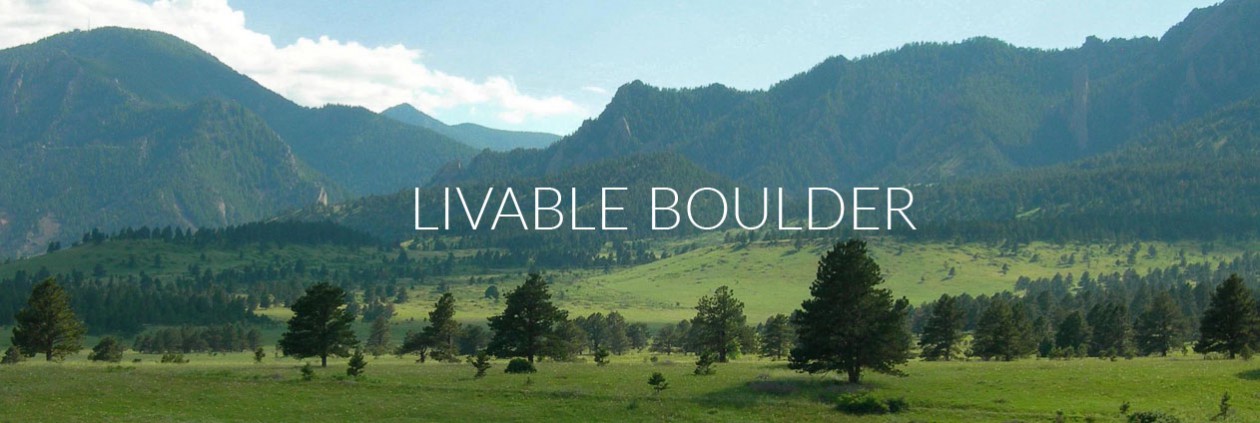Goss-Grove, a small jewel of an historic neighborhood close to downtown, was finally downzoned (to lower density) after 35 years of neighborhood activism. Yep, 35 years. That’s a long time to work with council. Make that several generations of councils. I wouldn’t describe this downzoning as an example of the responsiveness of the city to neighborhood concerns, even though both Will Toor and Macon Cowles have publicly stated as much. I contest their statements with the facts, and ask you to carefully consider whether you can trust city council to preserve what is the essential character of your neighborhood, while also allowing evolution, growth and improvements.
The residents of Goss-Grove started working with the city in 1977. Over a period of three years, the neighborhood association (one of the oldest in Boulder) worked with city planners to propose a special zoning called “Pyramid,” which would preserve old houses and control the scale of development while allowing more extensive building next to bigger buildings. It would have been the first zoning change since 1928. On Nov. 30, 1978, the planning board rejected Goss-Grove’s proposal, encouraging us to try again; Highland Lawn and Whittier were recommended for downzoning. In 1983, there was another attempt by Goss-Grove to stop a wave of multi-unit development in Goss-Grove. That failed as well.
Over the course of those five years, longtime residents watched bulldozers and wrecking balls roll into the neighborhood to knock down dozens of smaller homes to make room for cheaply constructed multi-unit apartment buildings lacking any aesthetic value.
In 2008, as the city considered changes to the high density Goss-Grove zone (RH-2) which would further reduce parking requirements and further encourage the construction of multi-unit buildings, we rose up again. In this situation, there was no choice to stay in the same zone, because the zone was being redefined. We would either be upzoned with the new definition of RH-2, or we could seek to be downzoned to the same zoning as Whittier. After four years of meetings, organizing tours for city council members and planning staff, many of whom had never visited our neighborhood, we were finally rezoned to RMX-1, which is consistent with the historic core of Goss-Grove. The heroic and unflagging efforts of a core group of neighbors is the only reason we kept going over this length of time, finally finding strong support by planning staff and receiving unanimous support from city council in the final vote. Even Naropa backed down from directly opposing the rezoning by recognizing that the new zone only comprised the historic core of the neighborhood.
As one neighbor said during public comment at one of the interminable council/planning board meetings “When I moved to Goss-Grove in 1977, my daughter was five months old. She is now 35. The request before you tonight is not the same one as in 1978, but the spirit behind it is the same. Almost 35 years ago, you urged us to try again. Please recommend to council that Goss-Grove be rezoned RMX-1”. That same resident commented that Matt Appelbaum turned to the other members of council and said something like, “My gosh, they’re still here. We have to give them something…”
We waited 35 years to finally get zoning to preserve what remains of what is special in Goss-Grove. Don’t believe the Will Toor/Macon Cowles fairy tales that the current system is listening and responding to neighborhood concerns. If you care about preserving the unique essence of your neighborhood, then vote to protect it by voting “Yes” on the ballot initiative 300, “Neighborhoods’ Right to Vote.” It requires the city to notify neighborhoods of planned land-use (zoning) changes to their neighborhoods, then allow them, if they desire, 60 days to gather signatures from 10 percent of the registered voters in the neighborhood, which would then trigger a vote of all registered voters residing in the neighborhood. A yes vote on 300 will allow neighbors to unite and support each other in protecting what is precious and unique in their neighborhood. I can only imagine how much more wonderful Goss-Grove would be today if the city had listened to us 35 years ago.
Jenny Devaud lives in Boulder.
